Serving caviar requires certain knowledge of caviar and the different details regarding its appropriate presentation. Below, you’ll find relevant details about the process of preparing caviar for serving. This includes the recommended serving sizes, storage practices, presentation details, beverage pairings, and garnishes that ensure you’re prepared to serve this delicacy to your friends and family and make sure that everyone enjoys it.
Although caviar is best served by itself, common accompaniments and accouterments include creme fraiche, lemon wedges, hard-cooked eggs (yolks and whites chopped separately), mini potatoes, minced onions, blinis, and toast points lightly coated with unsalted butter. Higher quality caviar is best eaten alone or simply with toast, blinis, or unsalted crackers.
When serving different types of caviar, they should be served in the order of the intensity of their tastes, beginning with the least intense and more mild-flavored, such as White Sturgeon, and moving on to those that are intense and more strong in flavor, such as Sevruga.
Serving Sizes for Caviar
Allow at least 14 g (½ oz) to 28 g (½ oz) of caviar per person. Refer to the caviar serving chart below:
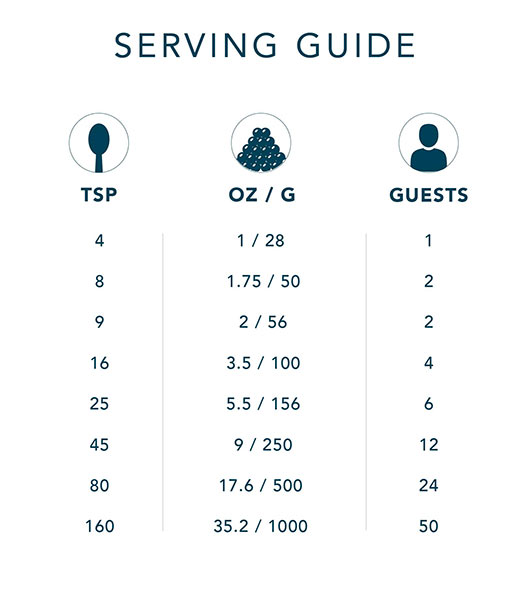

If you are looking to enjoy non-sturgeon roe, specifically, salmon roe, we recommend allowing for at least 28 g (½ oz) of caviar per person. Refer to the roe serving chart below:
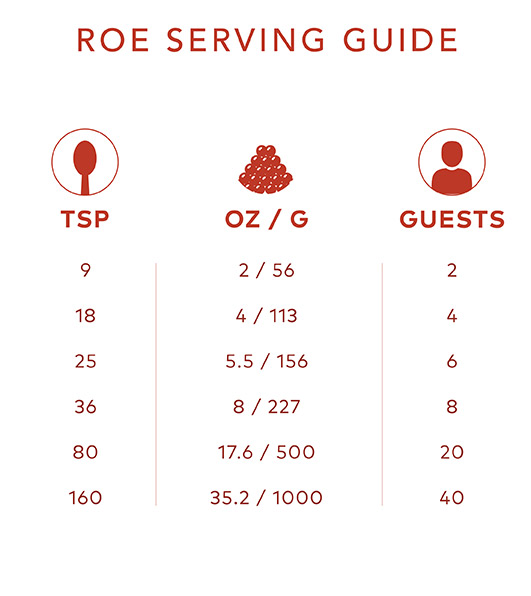

Storing Caviar
Caviar should be kept refrigerated between 26-35 F. Sturgeon caviar will last for up to 6 weeks in the refrigerator when the container is unopened.
Air is caviar’s greatest enemy. Ideally, it is best to purchase caviar in smaller containers, in size increments that will be consumed in a single seating or caviar service. But, if you have purchased more than you are serving, the remaining caviar should be softly spread flat with a mother-of-pearl spoon, taking care not to break any of the eggs, and then covered with plastic wrap, pressing down ever so gently on the top so no air remains trapped between the eggs and the cover. The remaining caviar should be consumed within the next 3 days.
Presenting Caviar
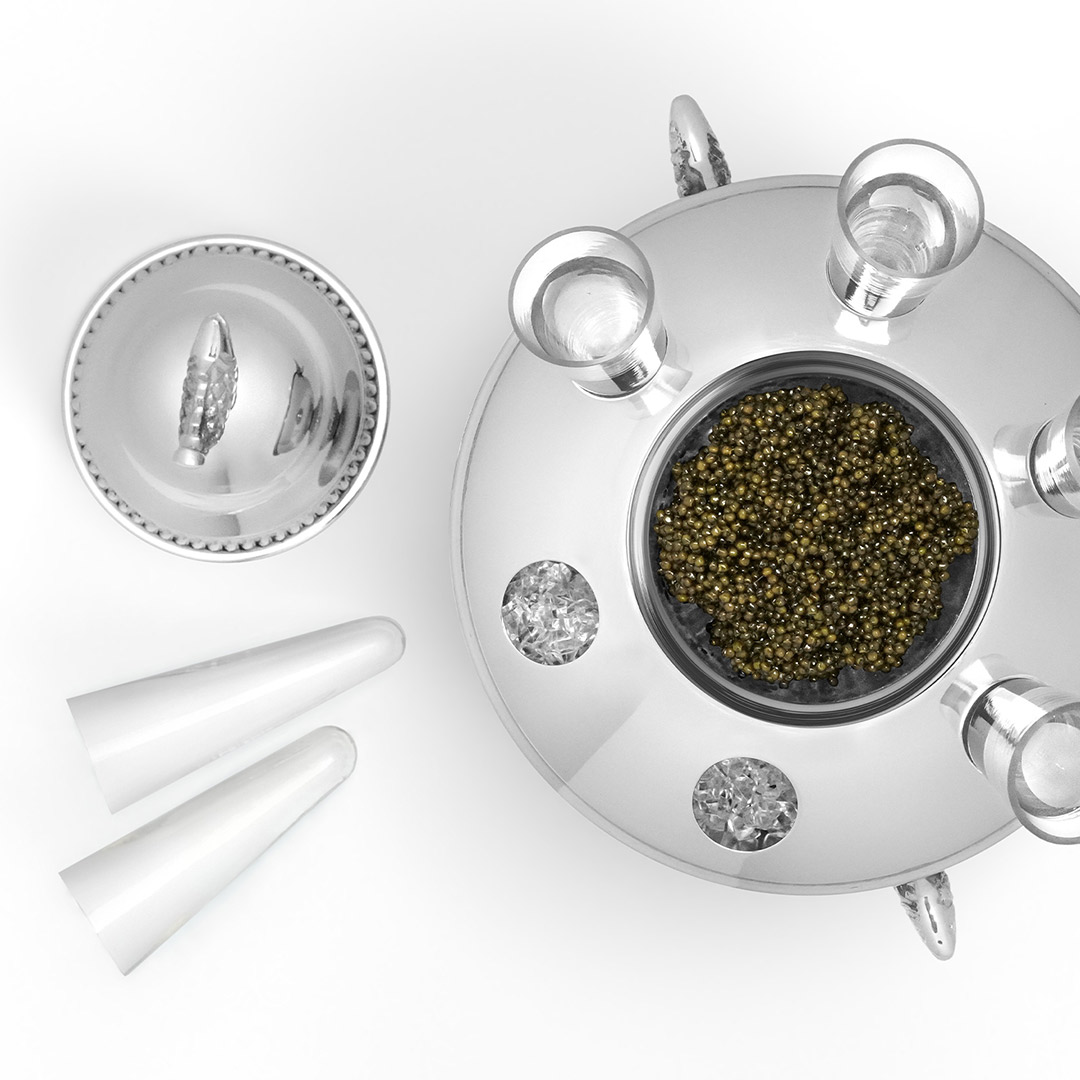

You should know that the traditional European way of presenting caviar usually differs by tableware and beverages that can be paired with it. The Russians serve caviar in metal, porcelain, or glass bowls without ice. The guests help themselves using special silver or gold-plated caviar spoon-shaped blades. Traditionally, caviar in Europe is served in a special caviar bowl that is put on a bed of crushed ice in a certain vase.
Sometimes, specially made pearl-shells caviar bowls are used.
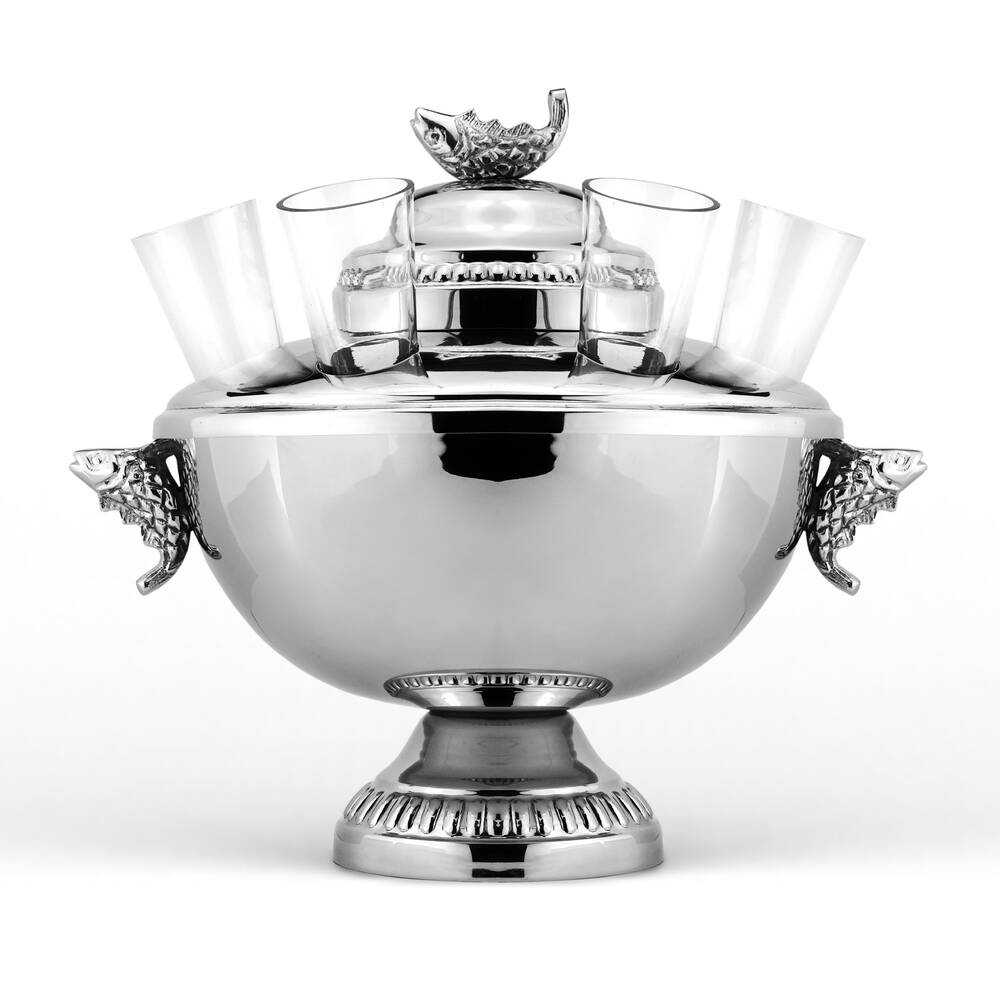

Silver Plated Caviar and Vodka Server
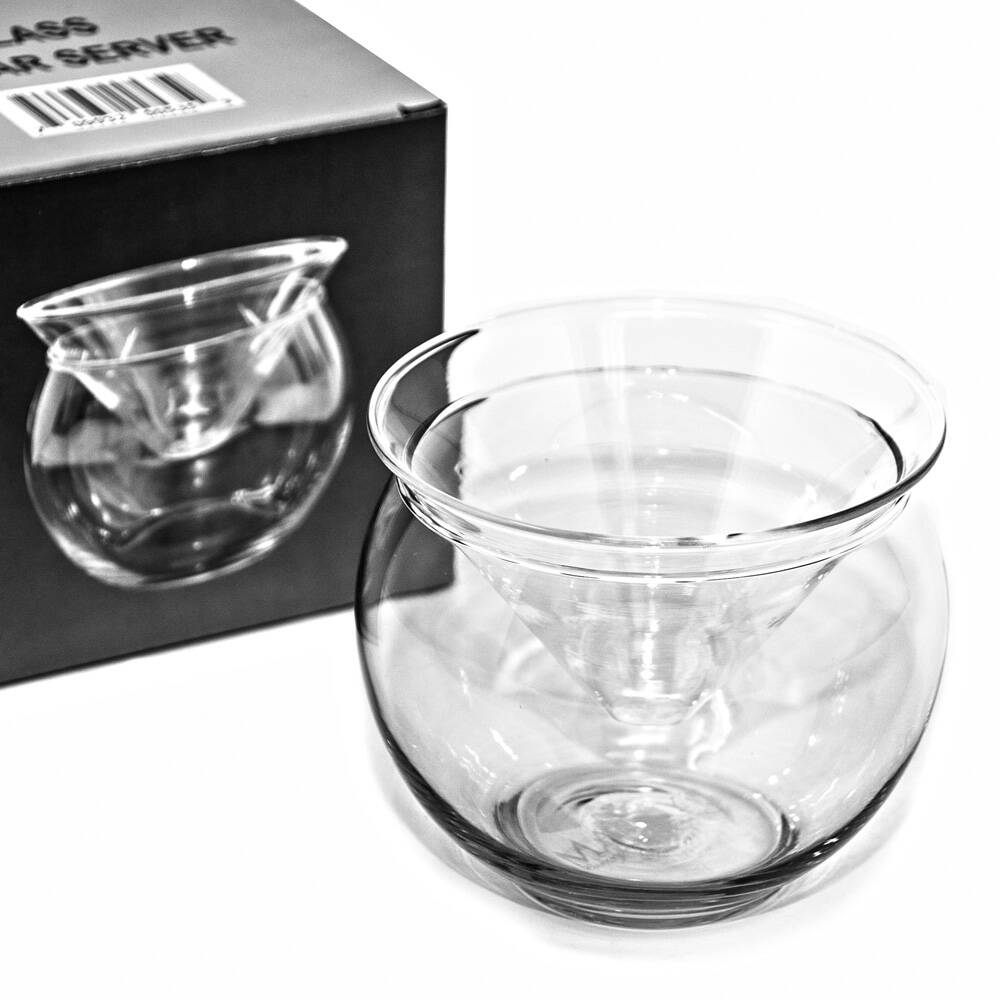

Glass Caviar Server Handmade
Beverages to Pair with Caviar
Caviar is a great match for alcoholic beverages. Traditional Ukrainian and Russian cuisine expects the fish eggs to be served with heavily chilled vodka, while champagne and wine should be left for dessert. However, the Europeans think of champagne and wine as successful pairings for caviar. Moreover, there are specific kinds of wines and sparkling wines that can complement certain types of caviars. Some recommended, perfect combinations include the following:
- Chardonnay & Beluga, Osetra, or White Sturgeon Caviar
- Cabernet Sauvignon & White Sturgeon Caviar
- Sauvignon Blanc & Golden Whitefish, Salmon, or Trout Caviar
- Brut & Any Black (Sturgeon) Caviar
- Blanc de Blanc & White Sturgeon, Salmon, or Trout Caviar
- Blanc de Noir & Beluga or Osetra Caviar
- Sparkling Rosé & Beluga or Osetra Caviar
- Pinot Noir & Salmon, Golden Whitefish, or White Sturgeon Caviar
- Rosé & Trout, Golden Whitefish Caviar, White Sturgeon, or Any Black (Sturgeon)
Serving Caviar
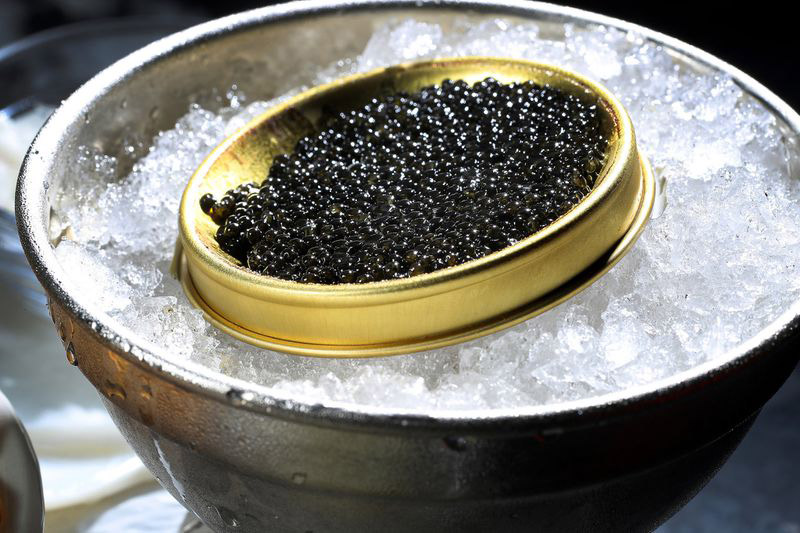

Caviar should definitely be served chilled but not frozen. Never keep caviar at room temperature, as this may affect caviar’s true taste and aroma. Caviar should be served on a bed of crushed ice, which will help you serve and store it at the right temperature throughout your dinner and enjoy its authentic taste. Traditionally, it is considered incorrect, or even rude, to take large portions of caviar at a single time. So, at a social gathering or event where caviar is being served, remember to consume it in amounts smaller than or equivalent to a tablespoon. Taking small bites will guarantee a melody of gentle, unique flavors. It is essential to remember that caviar should not be presented as a main dish due to its intense combination of flavors. If you decide to use the fish eggs as a component of a larger dish, it may negatively affect your tasting experience. Moreover, using caviar in quantities that constitute one main dish is often expensive. Therefore, we recommend you serve black caviar as an appetizer or hors d'oeuvres, which is the traditional way of serving it.
It is preferable to use mother of pearl spoons and forks for serving caviar. Aspreviously mentioned, your serving materials must be non-metallic to prevent the caviar from oxidizing and obtaining a metallic taste. As such, bone, horn, glass, and wooden spoons and forks are also acceptable. This is the most recommended way to serve and eat caviar because your sense of taste will not be impaired by a metallic taste and you will have an opportunity to taste the intricacies of the caviar’s unique flavor and sense its delicate aroma.
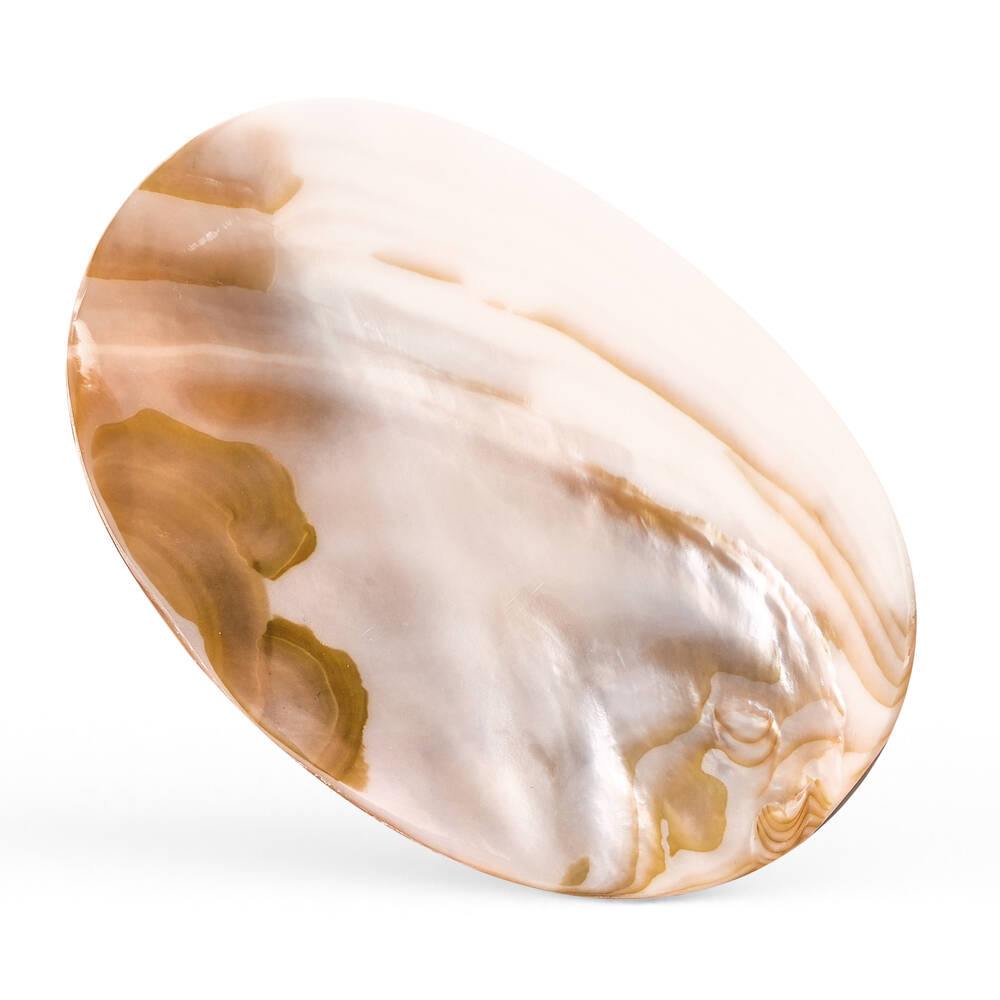

Mother of Pearl Caviar Plate
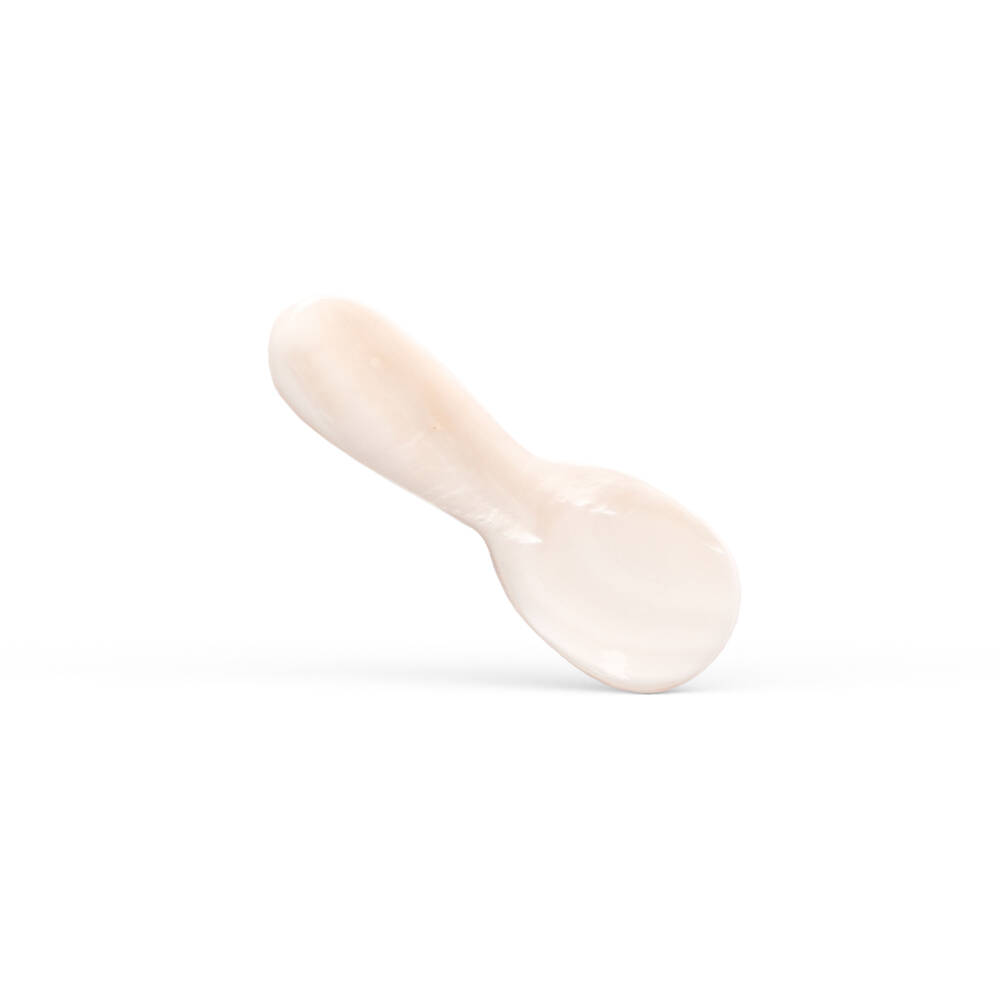

Mother of Pearl Caviar Spoon
Garnishing and Pairing Caviar
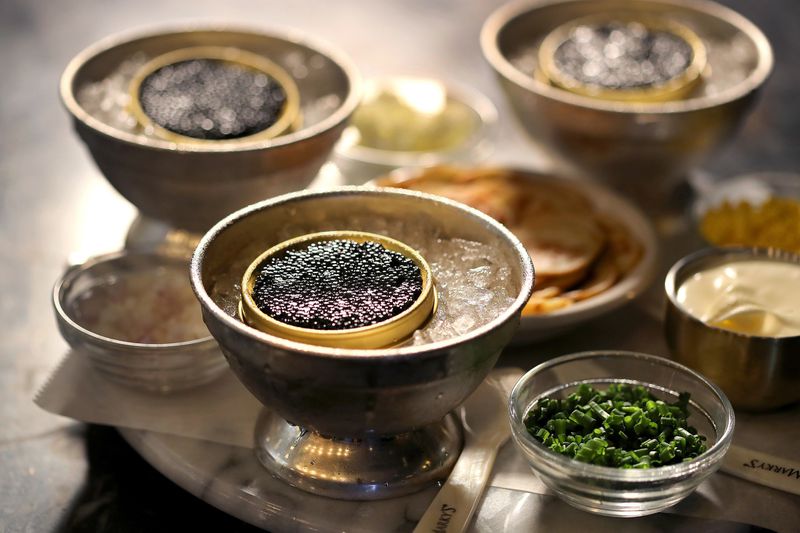

True caviar connoisseurs believe that the best way to eat and serve these delicate fish eggs is without any additions, by simply serving caviar on its own. These gourmet food experts believe that this is the only way to avoid having garnishes that prevent you from tasting caviar’s highly appreciated flavor. However, what one chooses to eat or not to eat with caviar is a matter of taste and personal preference. If you think that the taste of caviar is too intense, there are certain accouterments and accompaniments that can pair perfectly with this unique delicacy.
Caviar is often served on lightly-buttered dry toasts, unsalted crackers, or bread (crunchy baguette) with creme fraiche. You can also opt for the traditional way and eat caviar with mini pancakes known as “blinis”.
These are some traditional garnishes for caviar: creme fraiche, sour cream, fresh herbs, chopped onions, and crumbled hard-boiled eggs. Trying them as additions to the fish eggs can improve your caviar-eating experience.
The most expensive way to serve caviar is to put it on oysters or wrap it in Jamon Iberico. Favorite pairings also include serving caviar on top of boiled eggs or omelets, or with potatoes. The most unexpected product you can present with caviar is white chocolate.
The only thing you have to keep in mind is that caviar is supposed to be the pièce de résistance of any meal. Avoid overdoing it by adding too much caviar to your dish.
Now that you have all of the necessary information needed to prepare you for serving caviar, you can buy a nice tin or jar of red caviar or black caviar at Marky’s. Don’t forget about the little utensils including tin openers and spoons, forks, and plates made from delicate mother of pearl that are also available at our store, which will allow you to serve caviar in a proper way to your guests.
Bon appetit!
Have you ever wanted to have your very own caviar that is hand-crafted just for YOU? Well now's the time! This amazing new line from Chef Buddha Lo includes two varieties - Classic Kaluga at $80 per ounce and Premium Osetra caviar which runs about $100 dollars an ounce. You can find these delicacies online or in Marky's shops around NYC, but hurry before they sell out! Get the reference article ‘Top Chef’ Champ Buddha Lo Just Dropped His Own Line of Caviar.



